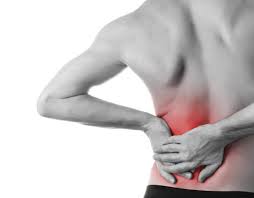 Where there are aches, or cramp-like pains in the back, sides and upper abdominal area, this may be a flank pain. Most people will suffer from this condition at some point, but the discomfort is usually temporary. Often, the pain seems to be worse on one side of the body and, although muscles spasms may at first seem to indicate muscular problems, it can be indicative of additional health issues including problems with the kidneys. Pain that occurs in the lower back or, where pain radiates to the side and to the groin, will definitely point towards a kidney problem. Observe whether there is dehydration or a urinary tract infection present.
Where there are aches, or cramp-like pains in the back, sides and upper abdominal area, this may be a flank pain. Most people will suffer from this condition at some point, but the discomfort is usually temporary. Often, the pain seems to be worse on one side of the body and, although muscles spasms may at first seem to indicate muscular problems, it can be indicative of additional health issues including problems with the kidneys. Pain that occurs in the lower back or, where pain radiates to the side and to the groin, will definitely point towards a kidney problem. Observe whether there is dehydration or a urinary tract infection present.
There are other causes of flank pain including:
- Kidney stones
- Kidney abscess
- Shingles
- Arthritis – in particular, arthritis of the spine
- Degenerative disc disease
- Pinched nerve in the back
- Muscle spasms
Other causes less well-known include:
- Pneumonia
- Kidney disease
- Appendicitis
- IBS
- Pancreatitis
- Blood clot blocks blood supply to the kidneys
The symptoms of flank pain will vary. Certainly, where dehydration occurs, the individual may have strong, colored urine, will be more thirsty than usual, have a dry mouth and there may be some dizziness. Additional symptoms could include headaches, constipation, and reduced urination.
Prevention is certainly a better option than cure and it may be possible to reduce the potential of flank pain or to ward off this condition through limiting alcohol consumption, ensuring a good diet of fruit, vegetables, and lean proteins and drinking up to 8 glasses of water each day. Certainly, by increasing water intake, there is the potential to flush out bacteria.
Seeking medical advice for flank pain is important, especially if pain worsens or does not dissipate. It’s important to consider the origin of the pain, when it occurred, how often it is experienced and any other symptoms. To be able to ascertain a correct diagnosis, the doctor will perform a physical examination, may request an x-ray to ascertain any problems in the muscles, organs or tissues of the body. Prior to an x-ray, a dye may be injected into the veins so to improve the quality of any images as it will highlight obstructions present. Additional diagnostic tests may include an abdominal CT scan, a urinary test, a urine culture and a cystoscopy. Dehydration, where present, must be resolved as soon as possible because it can impact the function of the cells, tissues and the organs. Physical therapy may help to reduce muscles spasms.
What is a flank pain a symptom of?
There are various potential causes as specified but, commonly, flank pain is related to kidney problems. Kidney stones may occur through diet and any foods consumed that are high in animal proteins or high in salt content could increase the risk. There may be a genetic link to kidney stones and where there are high levels of calcium in the urine, this could be hereditary and passed down through the generations. Those individuals who over-indulge in vitamins A and D may also have higher levels of calcium.
Where there are kidney stones, the pain will suddenly increase substantially and come in waves. This intense pain will continue until the stone, a crystal that has formed within urine and which is collected in the kidneys, has worked its way out of the body via the urinary tract assuming the stone is small enough. Treatment for kidney stones includes the increase of fluids as well as being prescribed medication for the pain. The doctor may perform a lithotripsy where there are larger kidney stones. Treatment is important for anyone suffering from kidney stones, if not removed, there is the potential for damage to the kidney.
